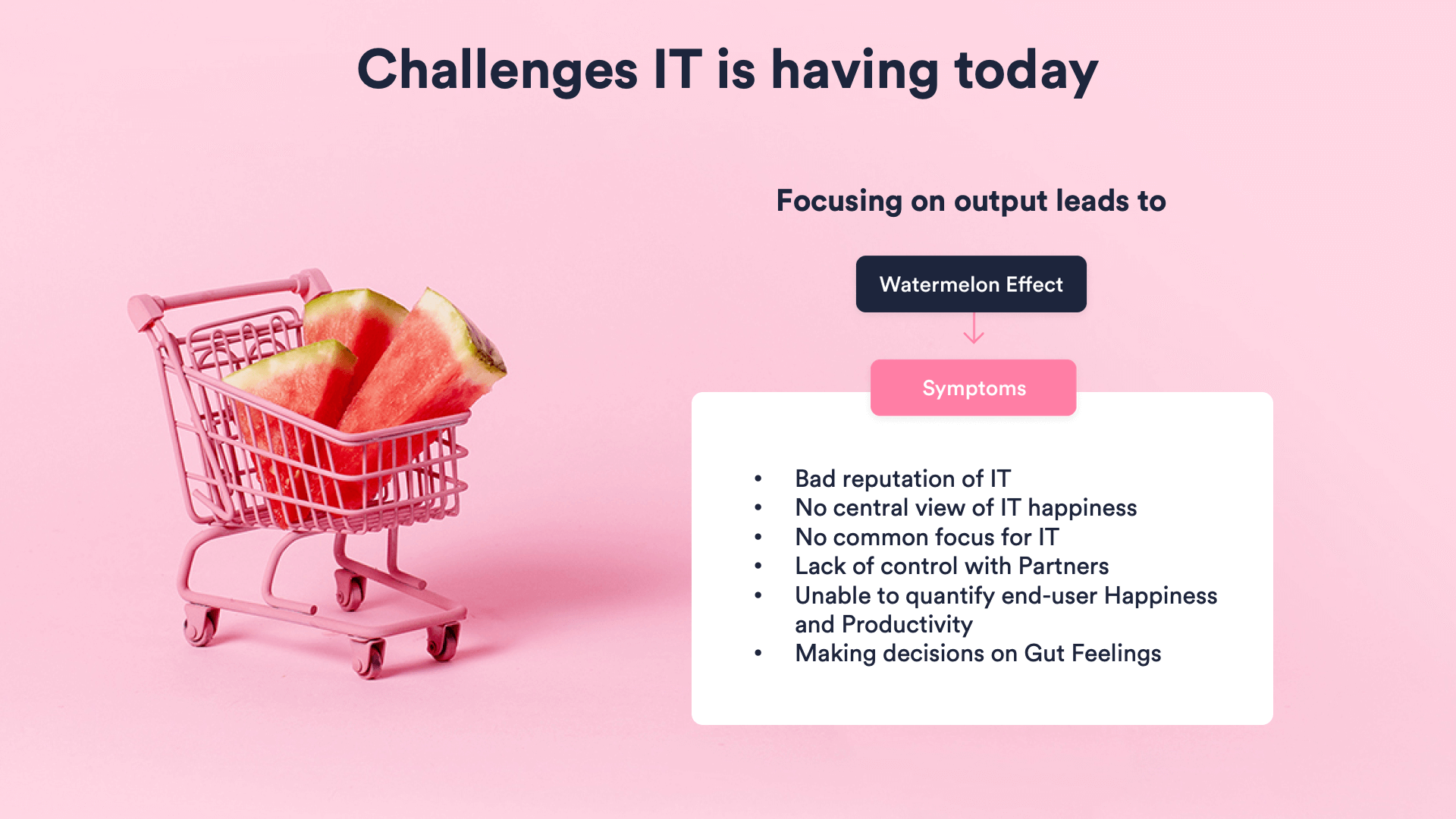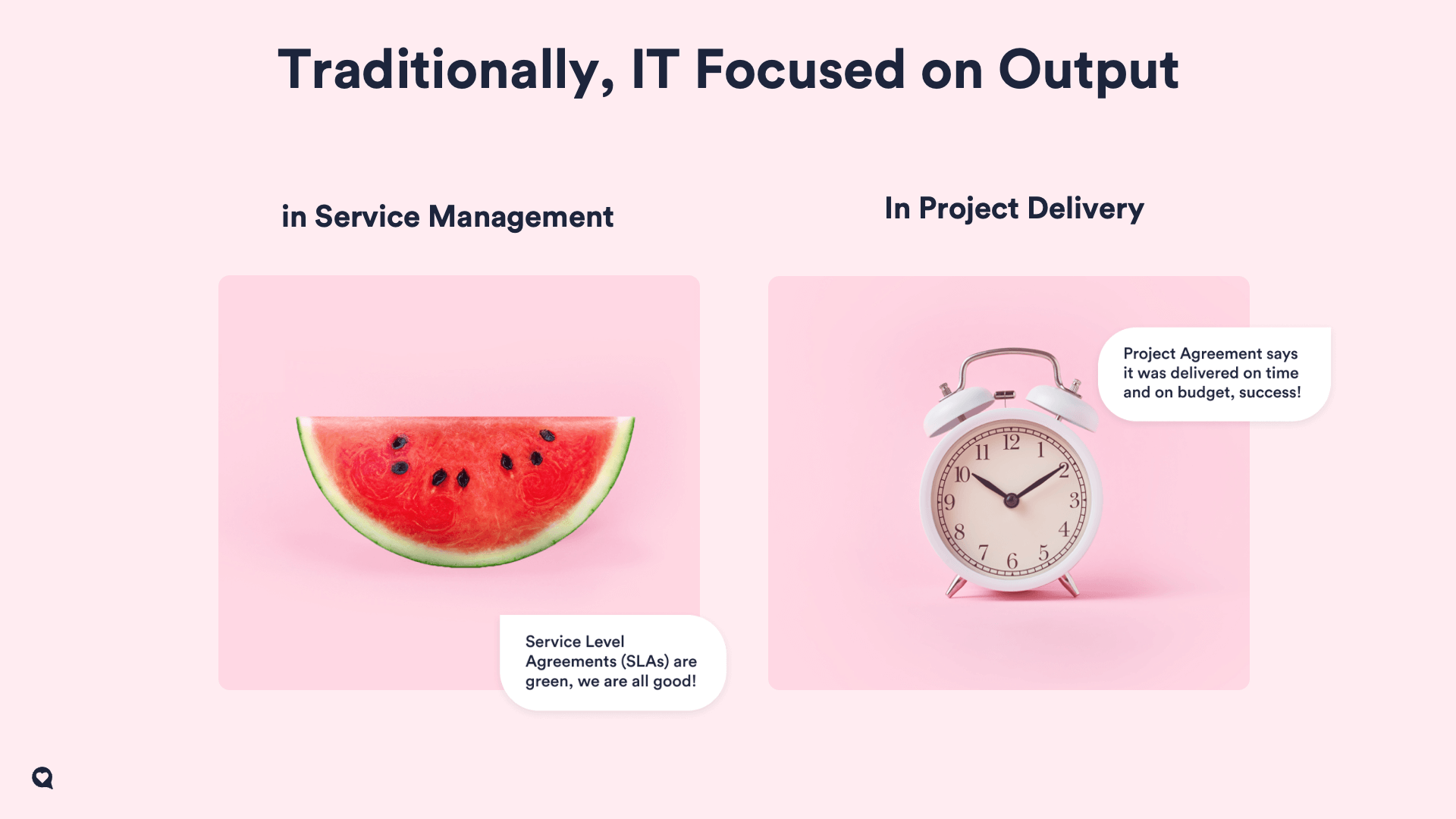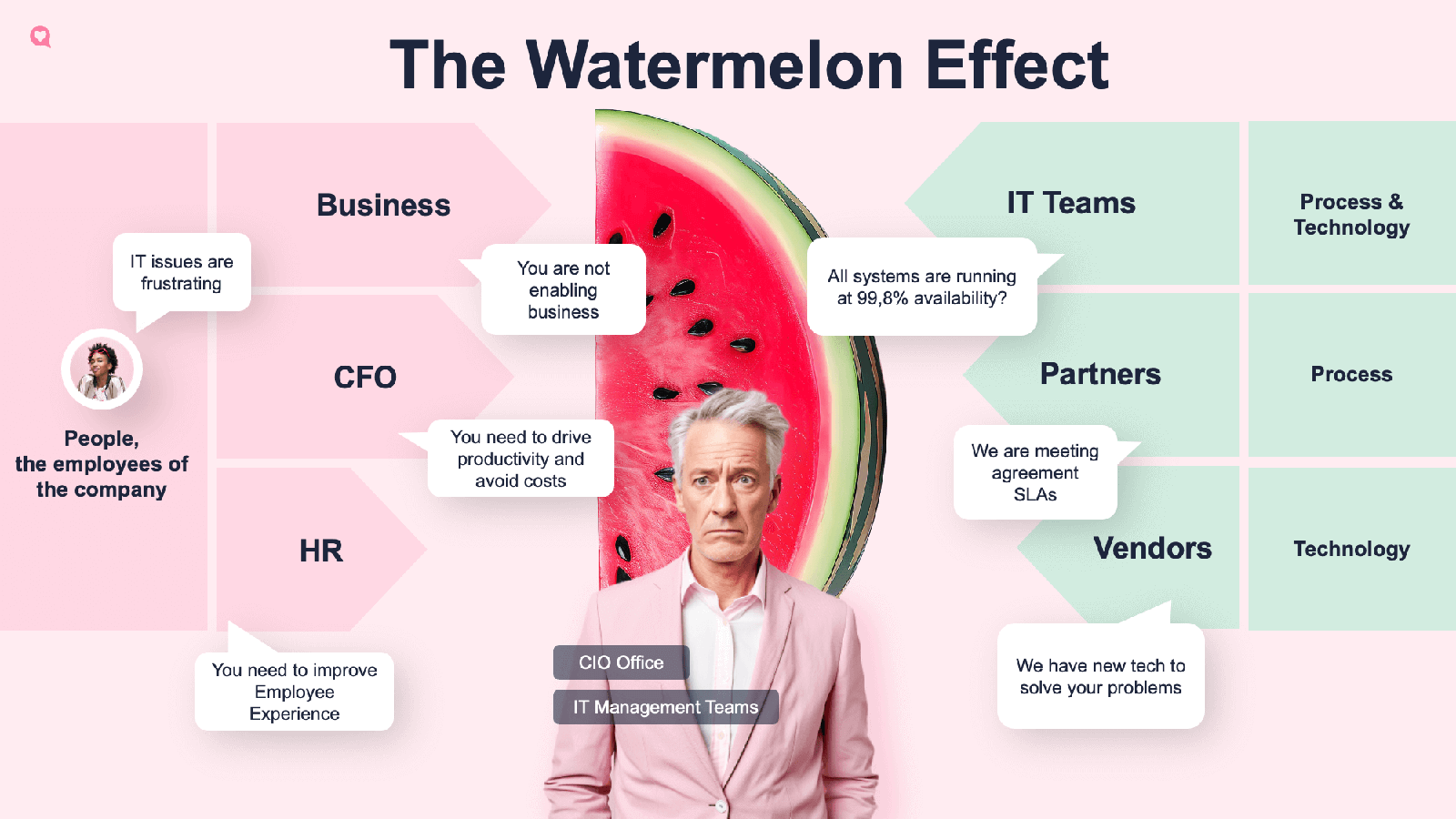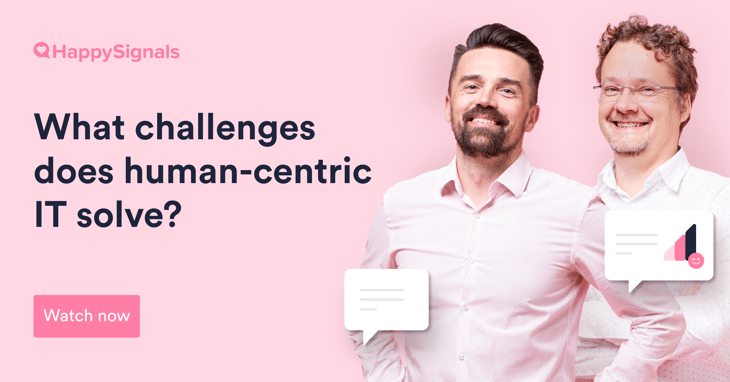When we founded HappySignals eight years ago, we had spoken to service desk service providers and CIOs and identified end-user experience challenges faced by Enterprise IT, which can be solved by moving towards a more human-centric approach in IT.
Traditional IT measurements do not capture the real value IT is providing to end-users and businesses
Traditionally, IT has focused on measuring outputs. In Service Management, that means measuring customer satisfaction (CSAT) and maintaining Service Level Agreement (SLA) targets. In Project Delivery, that means focusing on the budget and schedule, such as in digital transformation projects.
But by measuring IT in this way, we cannot truly understand how enterprise end-users are experiencing IT services, and what value IT is creating for the business. These traditional metrics do not measure, for example, whether Enterprise IT applications are making employees happy and more productive.
Focusing on output leads to the “Watermelon Effect”
Relying on traditional IT metrics creates a mismatch between what Enterprise IT teams think and what their end-users are actually experiencing and feeling about IT. We call this the “Watermelon Effect”, where SLAs look green on the outside, but end-user experience is, in fact, red on the inside.
Certain symptoms are typical when a Watermelon Effect exists:
- Key IT metrics look green, implying that everything is going well
- But end-users are seeing red and talking negatively about IT
- IT has a bad reputation in the organization, but the IT team doesn't understand why

It is easy to spot the challenges the Watermelon Effect creates in your IT organization. Most prominently, IT gains a bad reputation among end-users. Go grab a beer with an employee and start talking about IT, you will probably hear about negative and frustrating experiences. Without a clear understanding of end-user experience, it is also difficult to establish a common focus for IT across internal IT and external IT vendors in different global locations.
IT department starts to make decisions based on gut feelings rather than real end-user data. It should be no surprise that these decisions are unlikely to support employees in the ways they need and want to be supported.
Great employee experience should be the outcome of IT
IT departments need to better understand how its various services and projects are helping end-users (or not). Enterprise IT end-users experience many different IT touchpoints, from support services to enterprise applications, computer and mobile devices, remote work, and collaboration with IT. IT team needs to be able to holistically understand and quantify end-user happiness and productivity in all these different areas.
End-user experience data enables IT to achieve outcomes that matter
When end-user experience data from all touchpoints is accessible to internal IT teams, partners, and business stakeholders alike, they can form a common opinion about what areas of IT need to be improved and how. IT then has the knowledge and justification it needs to make human-centric improvements and achieve outcomes that matter for both end-users and the business.
Is your IT organization also facing some of the challenges I mentioned?







